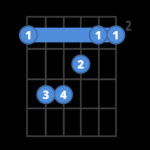Tokai Gakki, nestled in Hamamatsu, Japan, stands as a testament to enduring guitar craftsmanship. My visit to the Tokai factory, following my exploration of Fujigen, offered a captivating glimpse into a family-run business with a rich history of guitar innovation and dedication to quality, especially renowned for their exceptional Tokai Guitars.
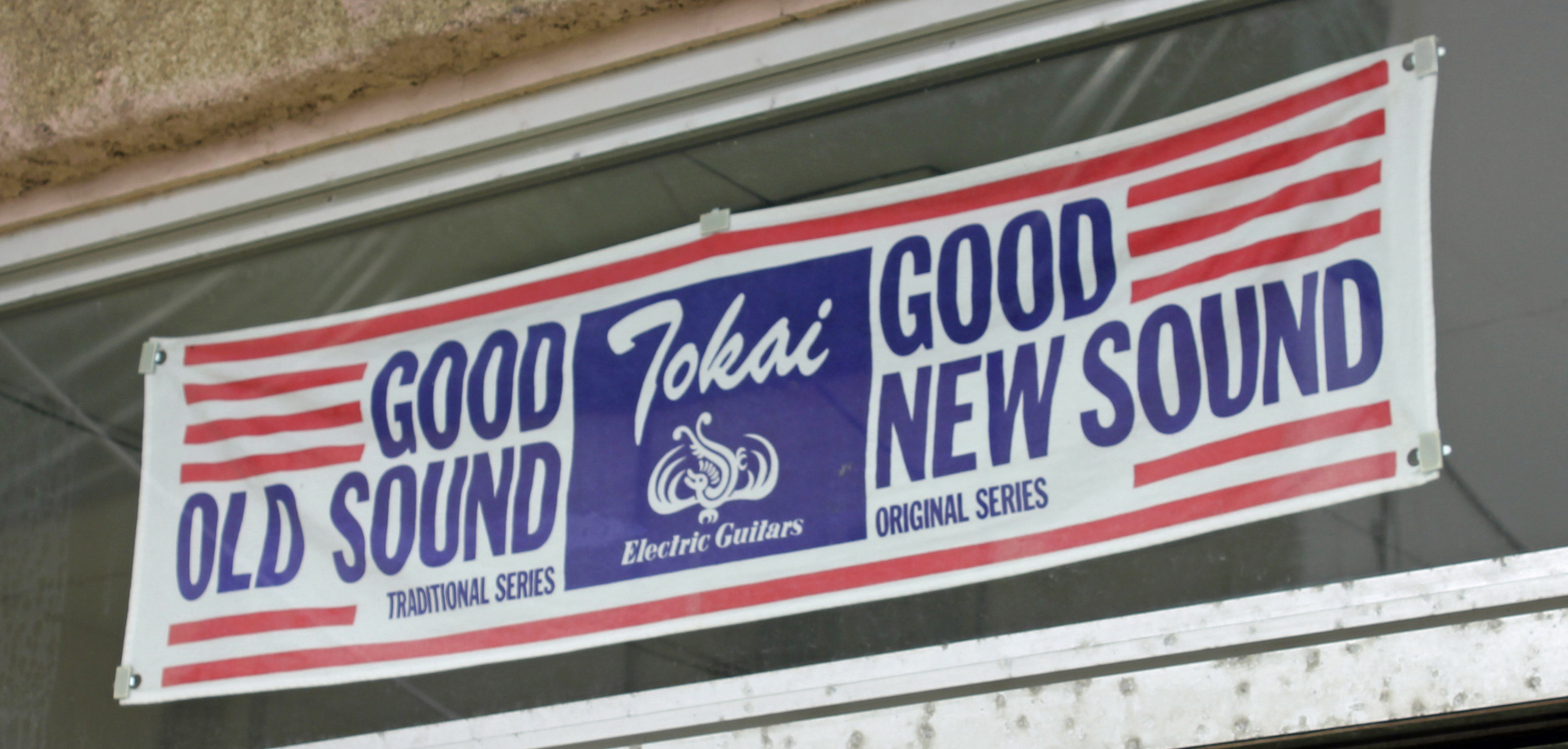 Tokai Factory 3
Tokai Factory 3
My initial contact with Tokai was during research for a book on vintage Japanese guitars. From the outset, the warmth and openness of the Tokai team were evident. Company President Shohei Adachi, a third-generation leader, embodies the spirit of this family enterprise, which traces its origins back to 1947, initially crafting reed instruments. Tokai’s transition into electric guitars in the late 1960s marked the beginning of their journey to becoming a celebrated name in the guitar world.
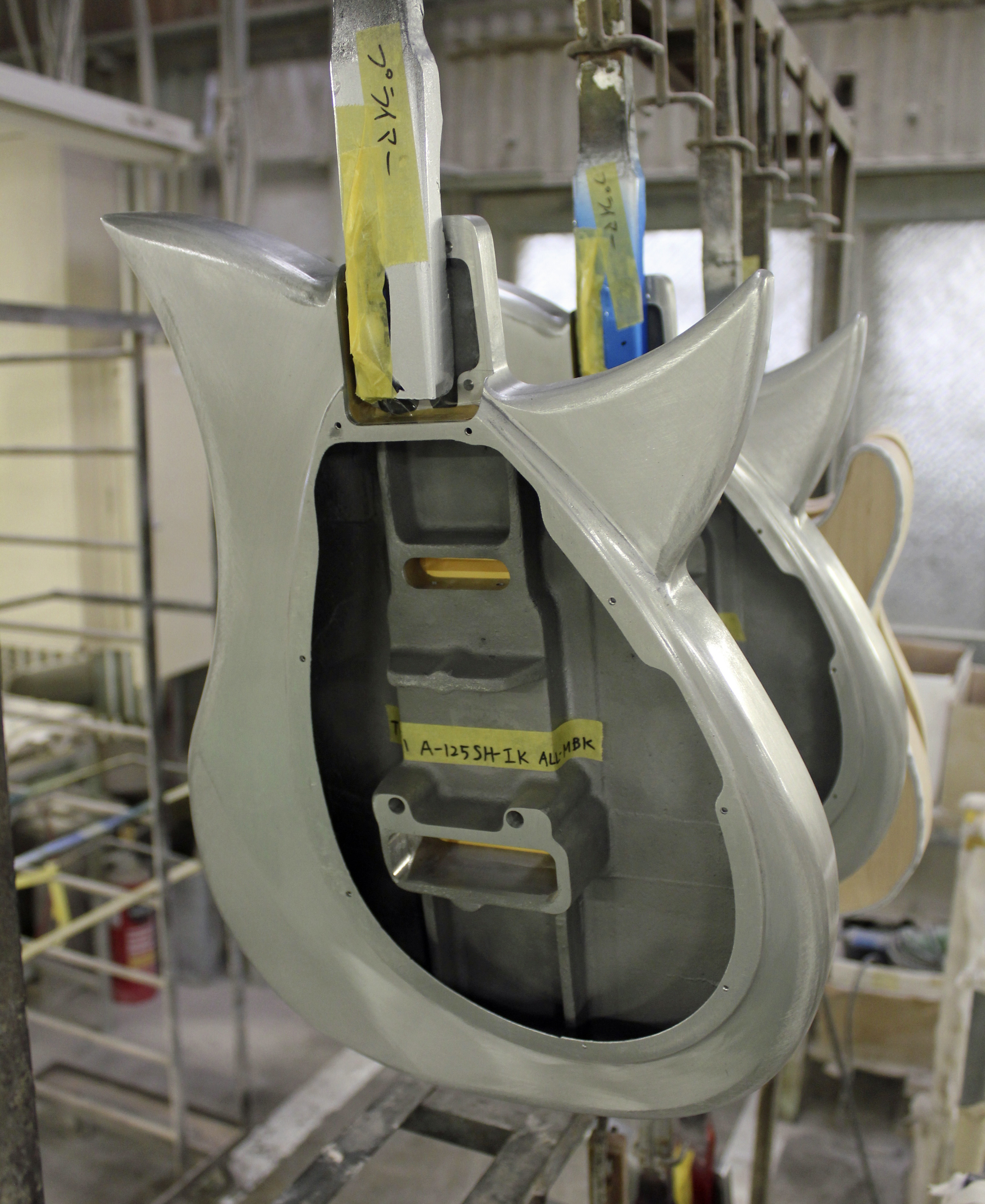 Tokai Factory 6
Tokai Factory 6
While Tokai produces original designs like the strikingly innovative Talbo, they garnered significant acclaim during the “copy era” for their meticulous recreations of classic American guitars. Guitars from the late 1970s, particularly the “Love Rock,” “Breezy Sound,” and “Springy Sound” models, are highly coveted by players and collectors alike, representing the pinnacle of Tokai’s craftsmanship during this period. These models showcased Tokai’s commitment to quality and precision, capturing the essence of the iconic guitars they emulated while establishing their own identity.
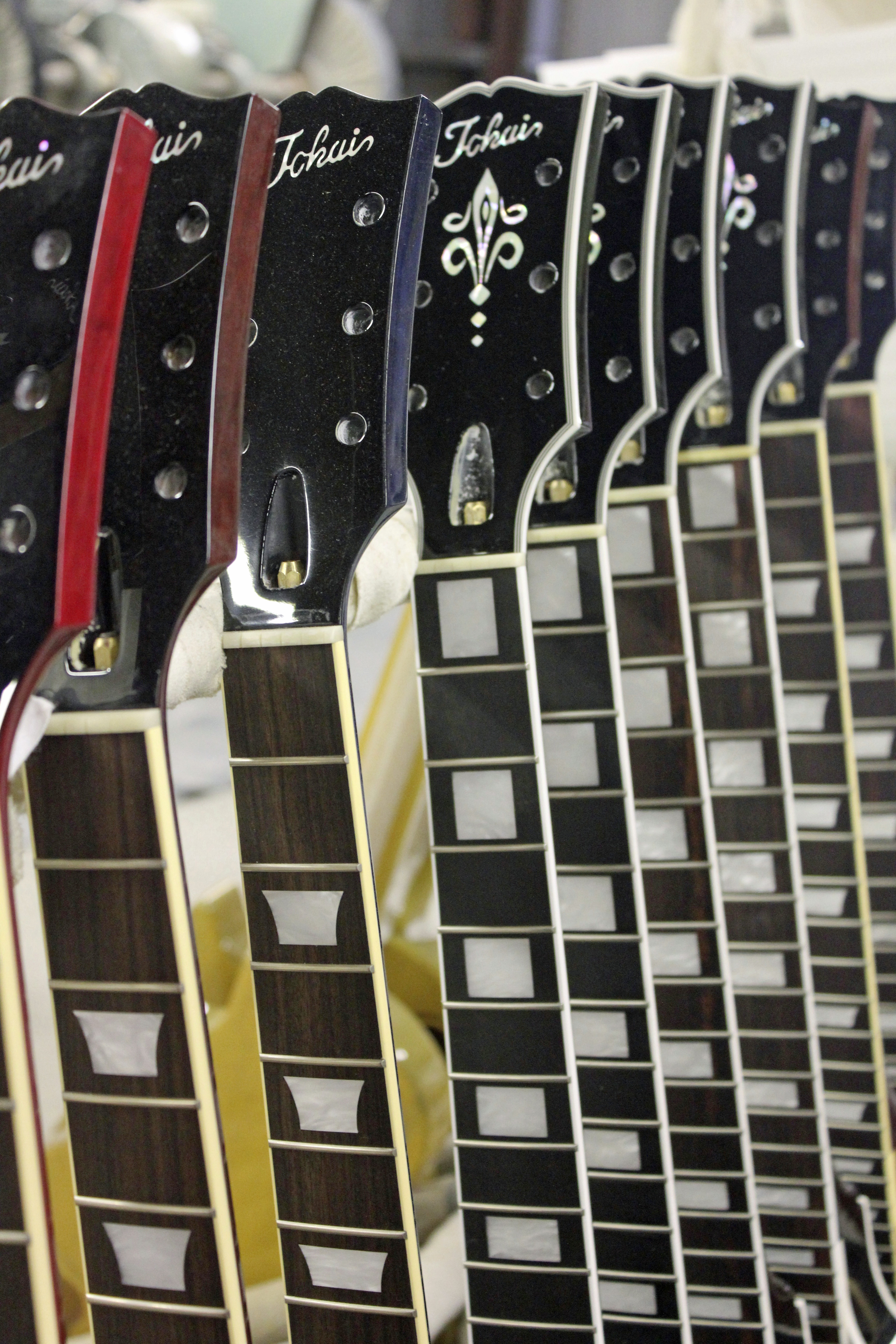 Tokai Factory 5
Tokai Factory 5
Even today, Tokai Gakki continues to produce exceptional guitars at their Japanese factory, maintaining the high standards that defined their legacy. Although these Japanese-made Tokai guitars are unfortunately not currently distributed in the American market, their reputation for quality endures globally. My personal experience with a vintage Love Rock guitar left a lasting impression of superior construction and playability. Tokai’s current lineup caters to diverse musical styles and budgets, ensuring that players across the spectrum can experience the renowned Tokai quality.
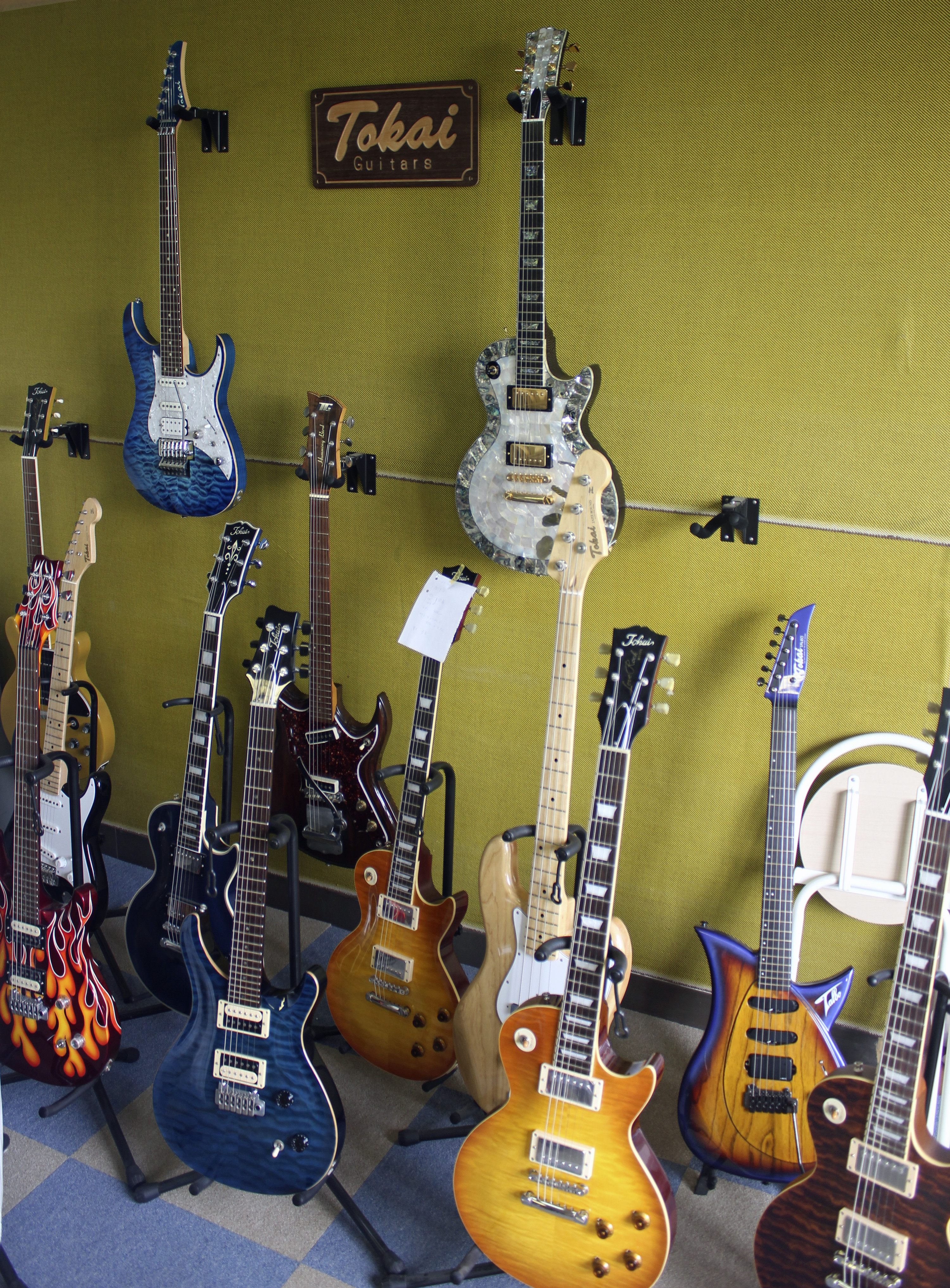 Tokai Factory 2
Tokai Factory 2
Stepping into the artist showroom at Tokai revealed the breadth of their current electric guitar offerings. The sheer variety of finish options was striking, demonstrating Tokai’s willingness to embrace bold aesthetics alongside classic designs. The showroom vividly showcased the “cool” factor inherent in Tokai guitars, reflecting a blend of traditional craftsmanship and contemporary flair.
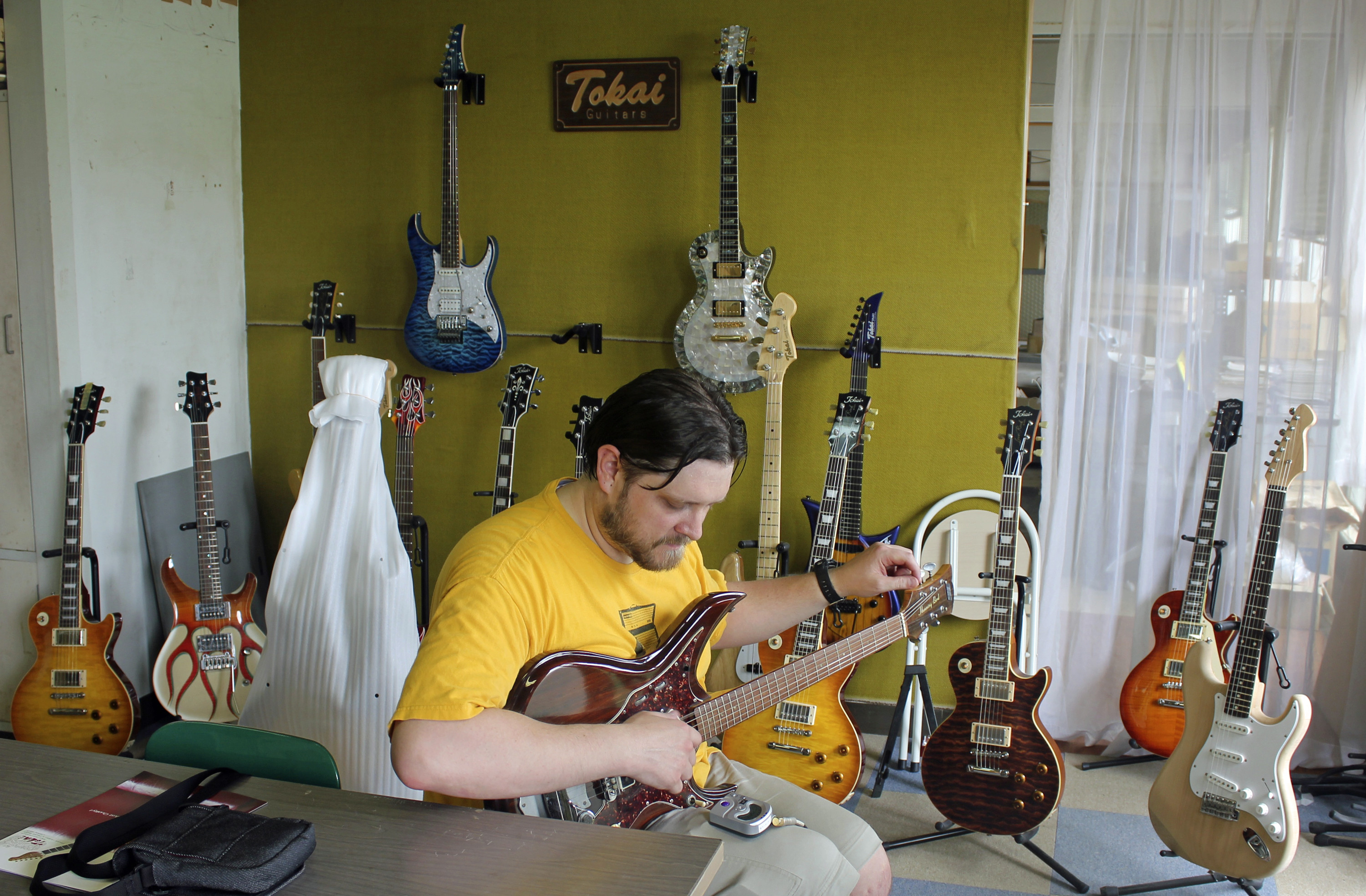 Tokai Factory 1
Tokai Factory 1
One truly memorable moment was tuning up a vintage 1967 Tokai Hummingbird. The entire factory visit felt like a dream for a guitar enthusiast. Being surrounded by so many instruments was an immersive experience, a deep dive into the world of guitar creation. My two weeks in Japan, while incredible, felt far too short to fully absorb the depth of Japanese guitar manufacturing culture.
 Tokai Factory 13
Tokai Factory 13
The enduring quality of Tokai guitars stems from a deep-seated pride in craftsmanship. Attention to detail is paramount, with a significant amount of handwork still integral to the production process. The factory floor was populated by employees with decades of experience, their accumulated guitar-building knowledge valued and nurtured by Tokai. This emphasis on experienced hands ensures a consistent level of quality across all Tokai instruments.
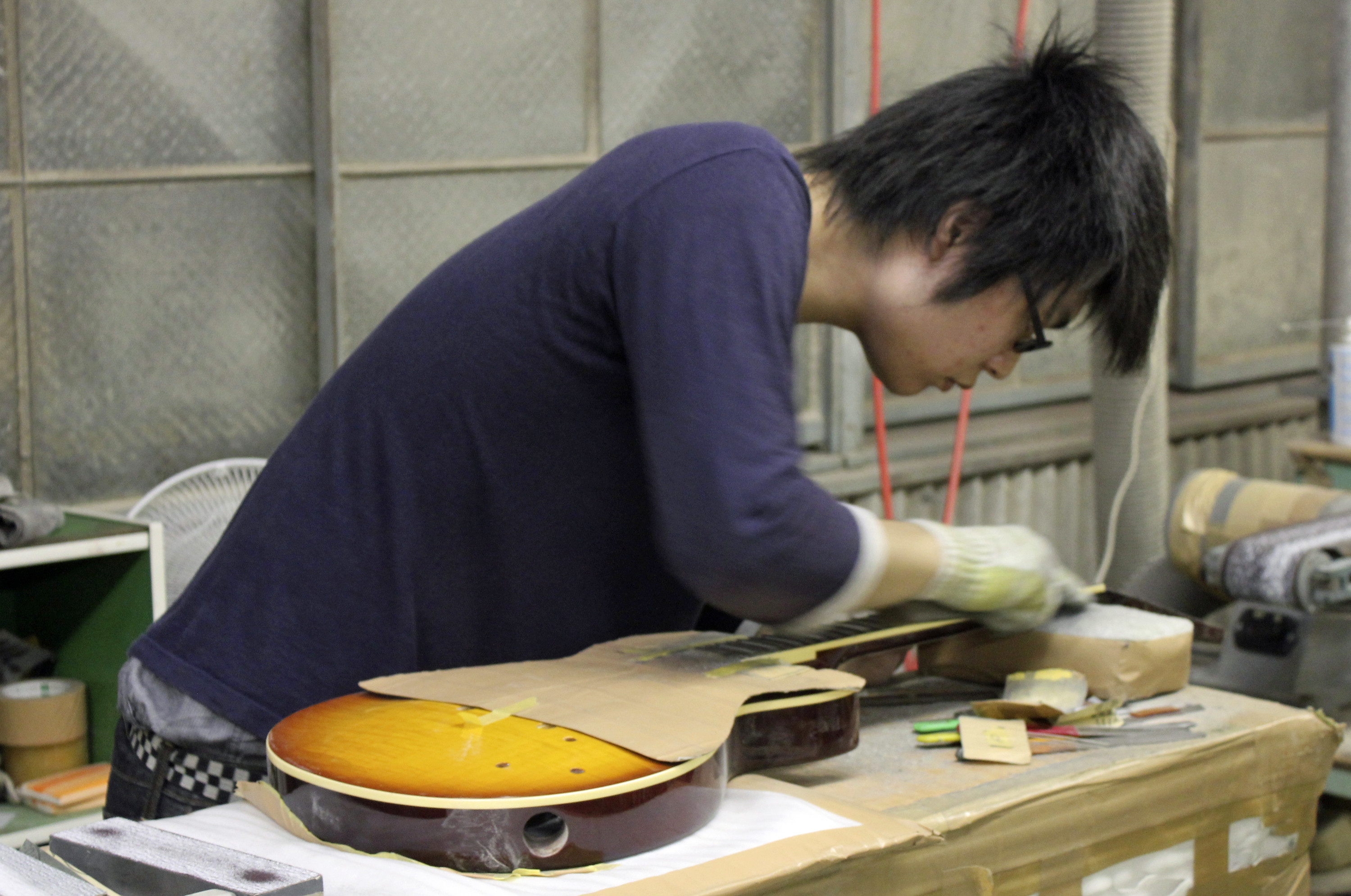 Tokai Factory 14
Tokai Factory 14
Fretwork, a critical aspect of guitar playability, is still meticulously performed by hand at Tokai. Witnessing the labor involved in crafting each guitar was truly impressive. The careful rounding of fret edges to achieve a smooth, “rolled” feel exemplifies the level of detail Tokai prioritizes. In-house finish work further contributes to the overall quality, with all guitars exhibiting exceptional finishes. The painting section, in particular, was fascinating, showcasing Tokai’s capacity for custom and unique finishes, highlighting their creative spirit.
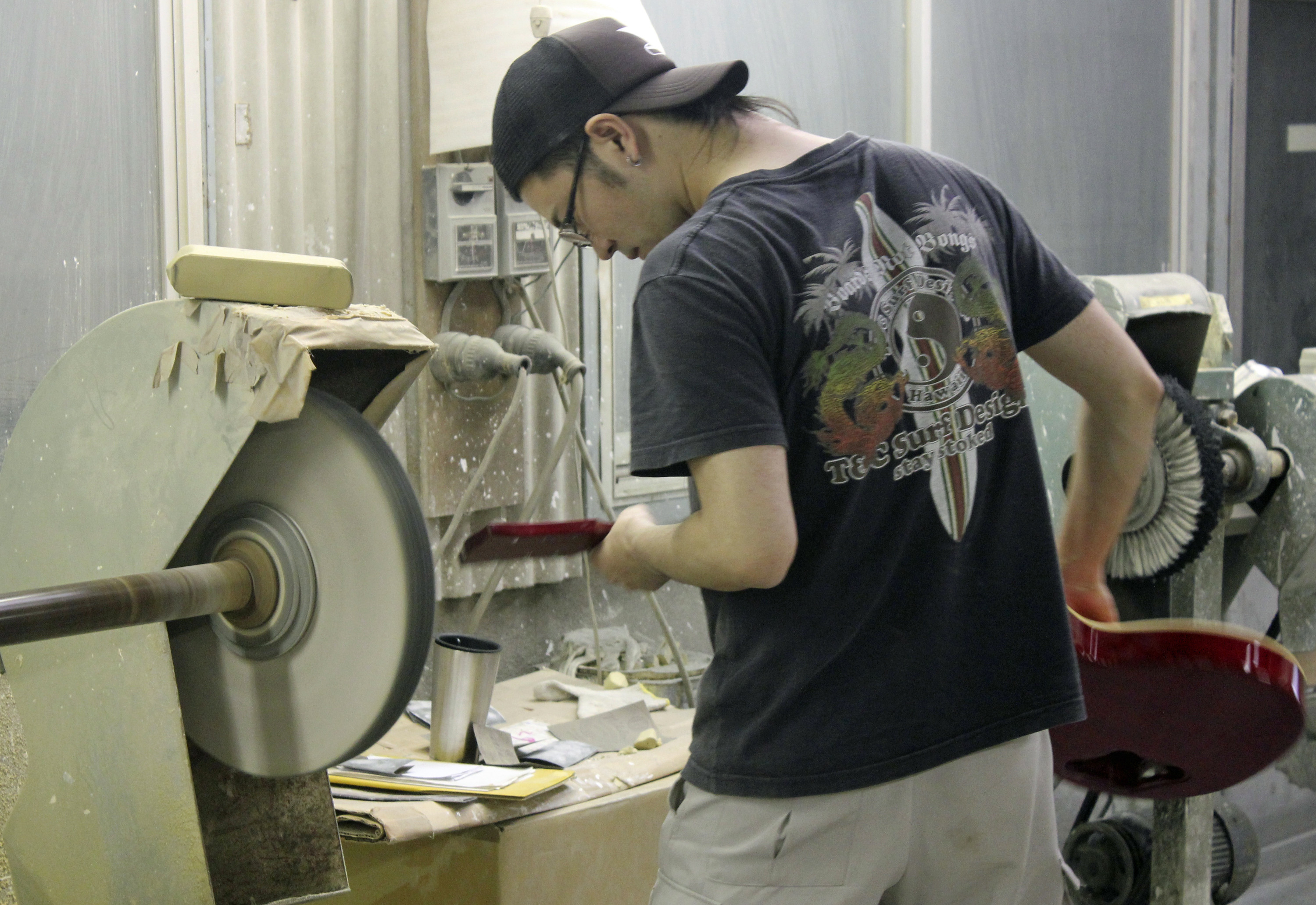 Tokai Factory 7
Tokai Factory 7
Tokai Gakki’s commitment to innovation extends to sound and wood research. Their development of the SEB (Sound Effect Body) Structure represents a significant advancement in guitar construction. This technique optimizes wood vibration throughout the guitar body, enhancing resonance and tone. Examining guitar bodies built with SEB technology underscored Tokai’s dedication to pushing the boundaries of guitar design and construction.
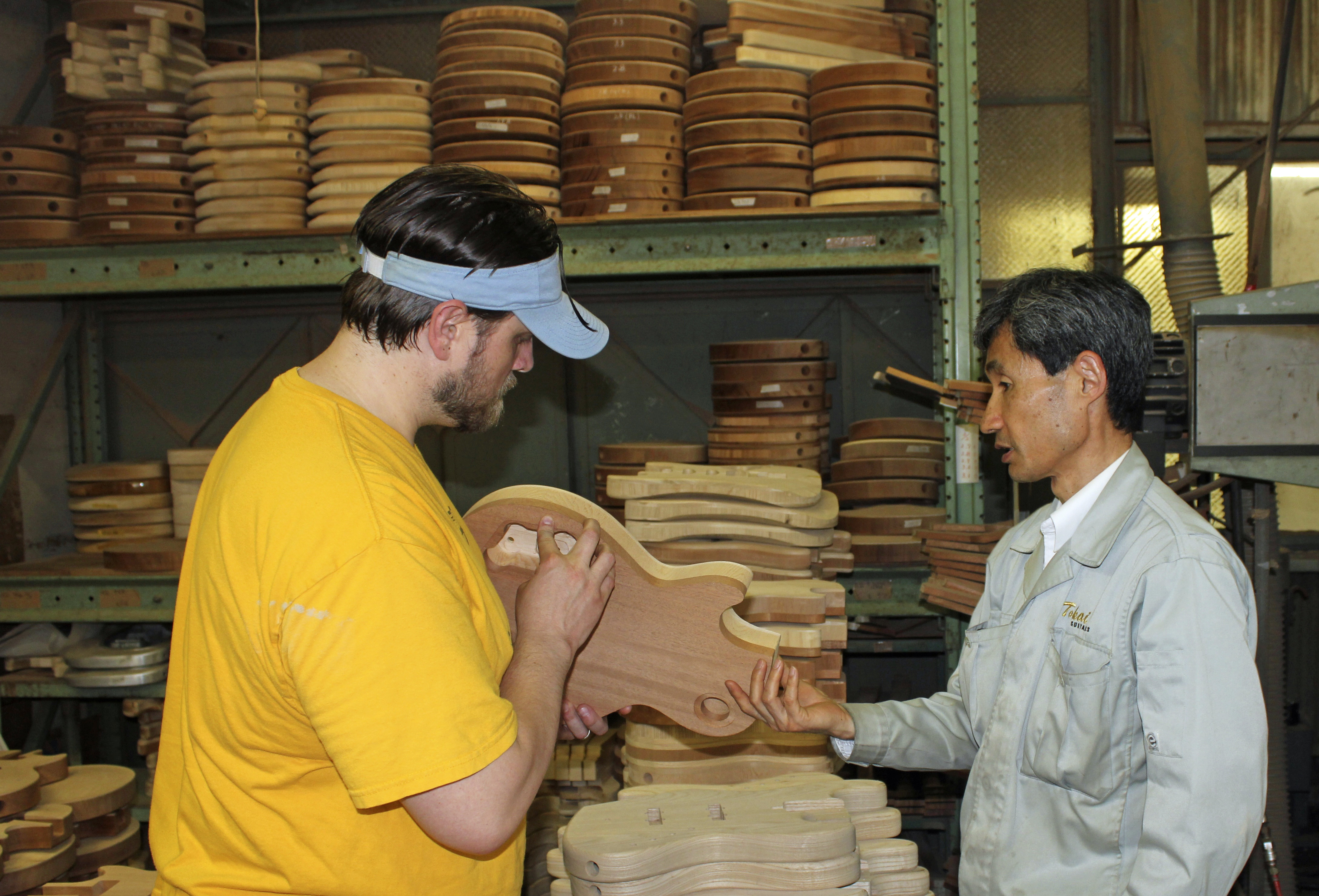 Tokai Factory 17
Tokai Factory 17
President Shohei Adachi personally demonstrated the SEB process, highlighting Tokai’s experimental approach and dedication to perfecting this innovative technique. Their research into the properties of different tonewoods and their interaction with the SEB structure further illustrates Tokai’s holistic approach to guitar building, blending traditional methods with modern scientific understanding.
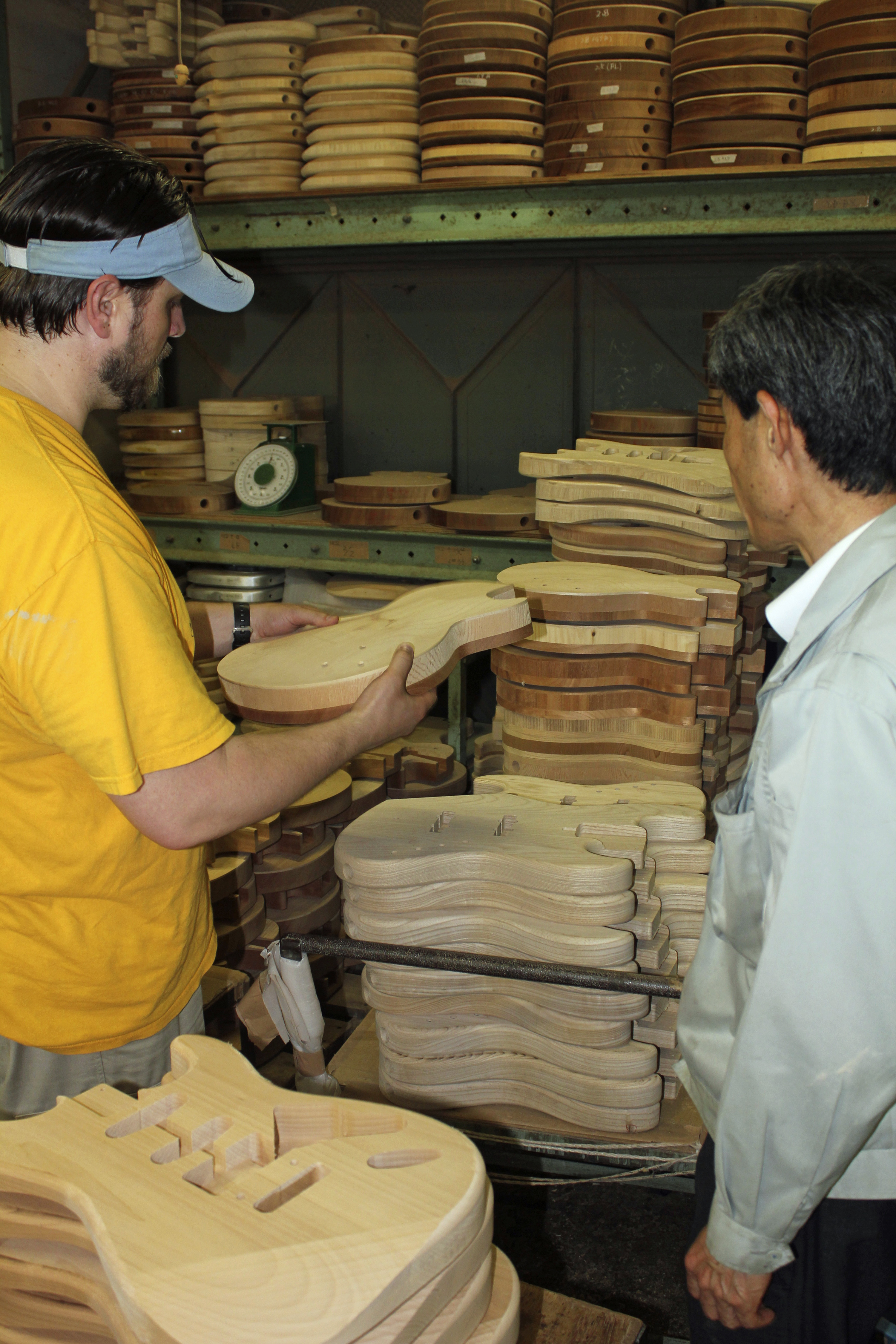 Tokai Factory 12
Tokai Factory 12
Tokai’s factory also houses a remarkable collection of vintage instruments, reflecting their long history. Being a smaller company, Tokai’s success isn’t solely reliant on mass production. This allows for greater care and attention to be invested in each guitar throughout the build process. Every finished Tokai guitar I inspected was flawless, a testament to their rigorous quality control. Furthermore, Tokai prioritizes properly dried and cured wood, a crucial factor often overlooked in mass-produced guitars. The issue of improperly dried wood, common even in some US-made and Chinese import guitars, is avoided by Tokai’s meticulous processes. The lingering smell of fresh finish on some new guitars can be a warning sign of rushed production, a stark contrast to the mature craftsmanship evident at Tokai. For those outside the US, the continued availability of Tokai guitars is a real advantage.
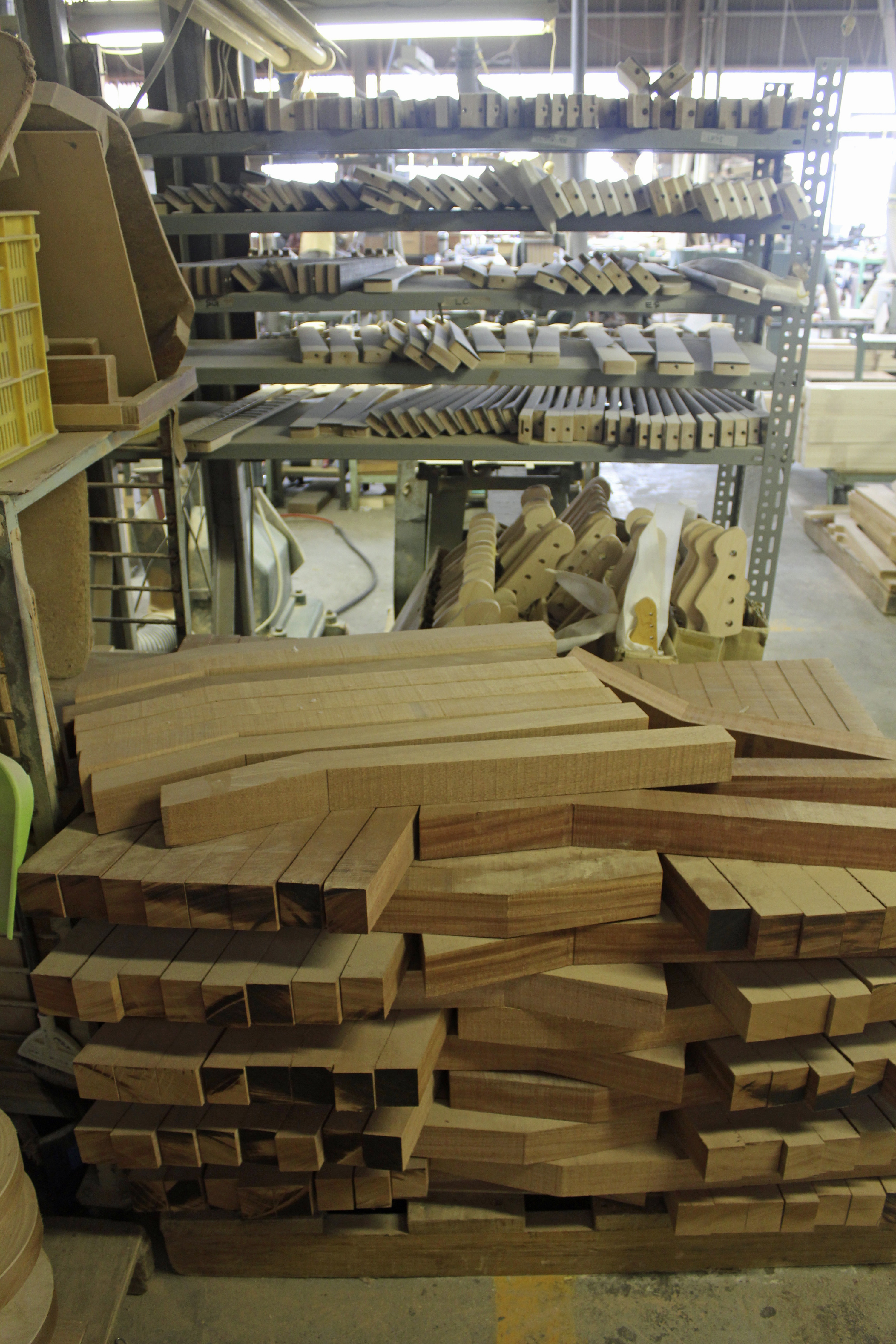 Tokai Factory 8
Tokai Factory 8
Beyond electric guitars, Tokai Gakki also produces acoustic guitars under the “Cat’s Eye” brand. It was astonishing to learn that a single master luthier handcrafts each of these acoustic instruments.
 Tokai Factory 10
Tokai Factory 10
This master luthier embodies traditional guitar-making, employing time-honored techniques and even utilizing some of the original tools and forms from Tokai’s early days. His workshop also showcased stunning custom guitars and a selection of aged, high-quality wood. The allure of owning a Tokai acoustic guitar, despite my personal preference for electrics, was undeniable after witnessing this level of dedication and artistry.
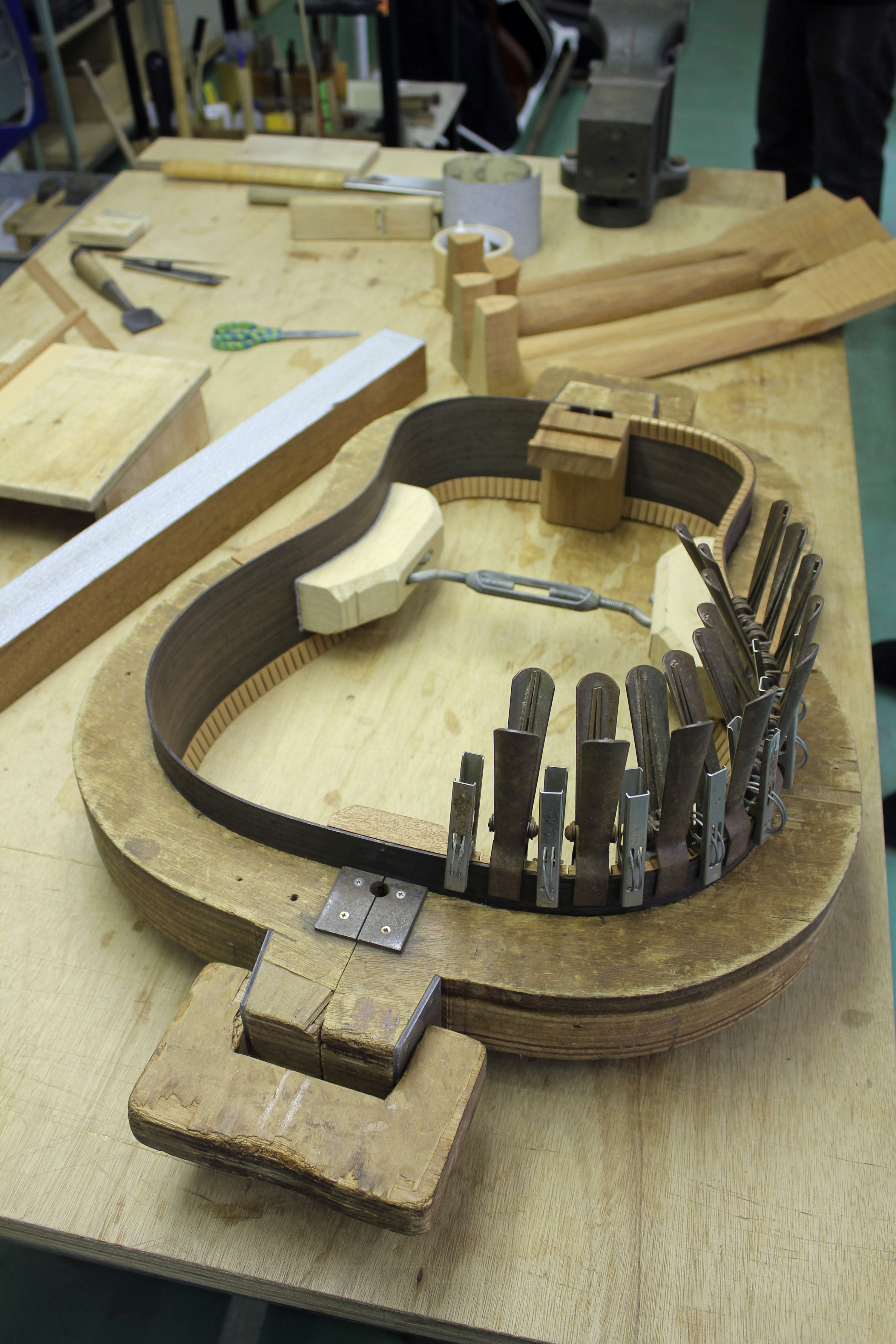 Tokai Factory 15
Tokai Factory 15
Tokai Gakki maintains an English website and offers virtual glimpses of their factory. Distribution networks also exist in the UK and Germany, providing access to their current models and information. While my personal passion leans towards vintage instruments, particularly vintage Tokai Hummingbirds, the dedication to quality across Tokai’s entire range is clear. For a taste of vintage Tokai, numerous resources online showcase the Hummingbird’s appeal, including video demos featuring players like Mike Dugan. During my visit, I even had the chance to meet the original designer of the Hummingbird, and passionately advocated for a reissue of these iconic guitars to President Adachi. If you share a desire to see the Hummingbird reborn, or simply appreciate Tokai guitars, reaching out to Tokai directly to express your interest can make a difference. Let’s spread the appreciation for Tokai, and maybe, the “Love Rock,” and the Hummingbird, will resonate with a new generation.
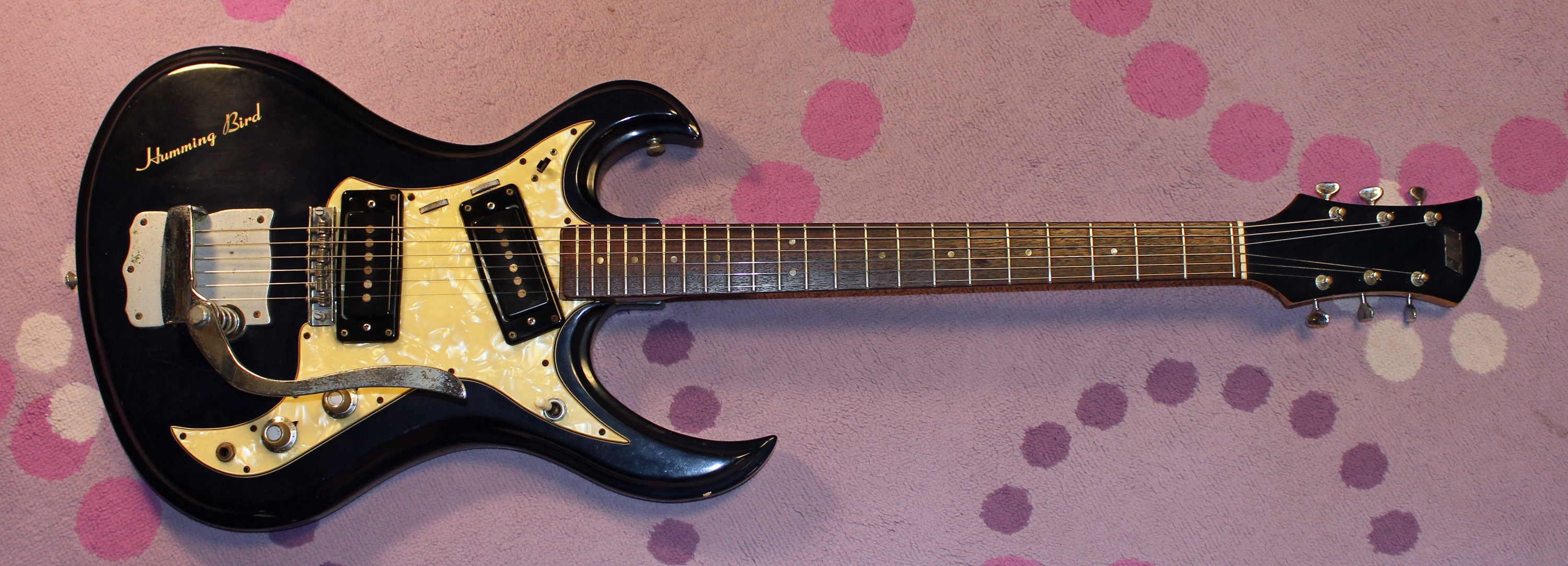 Tokai Hummingbird 200S
Tokai Hummingbird 200S

